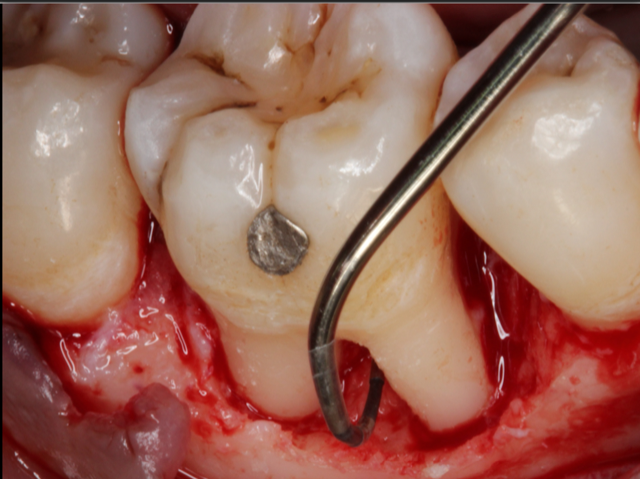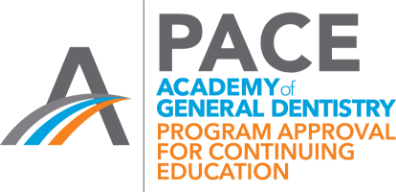

Presented by
Nikolaos K. Soldatos
DDS, MSD, PhD
View Bio
Course Description
Periodontics
The live webinar is designed to discuss the contemporary aspects of clinical periodontology for general dentists and dental hygienists. Starting from the patient’s medical history and how important is to understand when to move forward with the data collection and in which circumstances to give a medical consultation. The rationale behind a medical consultation is to communicate to the primary care physician and/or the specialist doctor, our concerns/recommendations or request for adjustment of medications. Systemic diseases and specific medications which may lead to a medical consultation request will be addressed.
As far as the collection of periodontal data, the importance of a correct periodontal charting will be emphasized since with the use of the new classification system, interproximal clinical attachment loss (CAL) is a predisposing factor to correctly diagnose our patients.
Finalizing the periodontal data collection, the need for full mouth x-rays and generally the use of radiographs in periodontology, will be discussed. Subsequently, several exercises on site will be performed so all participants will understand the etiological factors, the proper diagnosis and rationale behind the new classification system involving the staging and grading of chronic periodontitis.
Determination of periodontal prognosis is essential before the treatment plan is finalized and accepted from the patient. Therefore, the factors involved in this process along with the different prognostic classification systems will be reviewed. Since the risk of developing periodontal disease is different from patient to patient, all the factors, indicators and predictors will be analyzed. All the aforementioned stages will lead to the rationale of periodontal treatment which will be presented through a complete and tailored treatment plan to cover the specific needs of our patients.
The second and third parts of the course will discuss the secrets behind the successful treatment of periodontal disease. Starting from the proper oral hygiene instructions, the increase of patients’ compliance, the non-surgical and surgical treatments will be explored. As far as the non-surgical treatment is concerned, all the different approaches using either hand instruments or piezo/cavitron will be demonstrated with the use of videos showing the proper adaptation and angulation of the instruments.
Following the completion of the first phase of treatment (non-surgical), the determination if the patient will benefit from a surgical approach to accomplish the goal of periodontal therapy, which is the pocket depth reduction will be evaluated, either having a resective approach such as an osseous surgery or regenerative such as guided tissue regeneration. The participants will comprehend all the factors which will help them take the right decision with several exercises and clinical cases. Finally, advanced surgical techniques will be demonstrated in order to treat patients who are periodontally stable and would like to move forward with other needs, such as guided bone regeneration or extraction and ridge preservation, to place implants and restore partially edentulous areas.
Course Outline
- Diagnosis, Prognosis and Treatment plan
- Differences between the 1999 and the 2017 periodontal diagnosis classification system
- Medical history
- Periodontal charting
- Radiographs in clinical periodontology
- Prognosis’ classification systems
- Clinical risk assessment
- Etiology and diagnosis of periodontal disease
- Rationale for periodontal treatment
- Treatment plan
- Non-surgical treatment
- Sequence of treatment and healing patterns
- Periodontal instrumentation with hand instruments and piezo/cavitron
- The use of medications/antibiotics in clinical periodontology
- Surgical treatment
- Different surgical concepts in clinical periodontology:
- Osseous surgery
- Guided tissue regeneration
- Crown lengthening
- Extraction/ridge preservation
- Guided bone regeneration
- Virtual implant planing and surgical implant placement
- Different surgical concepts in clinical periodontology:
- Open Discussion
Dr. Soldatos’ presentation will use alive, interactive lecture presented via Zoom webinar with an accompanying PowerPoint presentation that will include a wide variety of clinical photographs to emphasize and demonstrate concepts. The live webinar will discuss the latest in therapies to treat periodontal diseases to optimize oral health. There will be ample opportunity for Q & A following each section of the presentation and at the end of the session.
Course Objectives
At the completion of this course the participants should be able to:
- Understand the difference between the old and the new AAP classification system and the importance of a proper periodontal charting
- Understand the significance of a thorough medical history at the first appointment and when a medical consultation should be sent to PCP prior to any periodontal treatment.
- Understand all the factors which will help them place a treatment plan tailored to the needs of their patients.
- Understand the interaction between periodontal diseases and systemic conditions.
- Understand the sequence of the periodontal treatment and the expected healing patterns.
- Understand when a patient should be referred to the periodontist and the difference between non-surgical and surgical treatment modalities
- Understand the different surgical modalities from resective to regenerative.
- Understand the correct CDT coding for the periodontal procedures.

